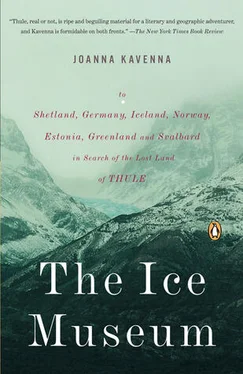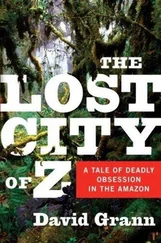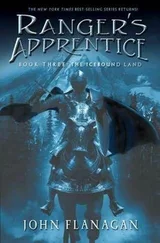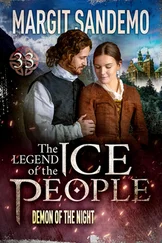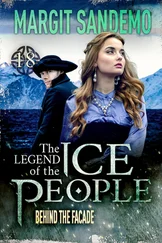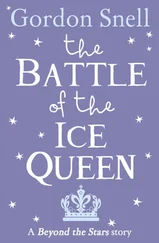‘Many of the travelling chemicals are carried westwards by the current that Nansen hoped would take him to the Pole,’ said Alice. ‘They come from the Ob, the Lena and the Yenisey, as the torrent pours into the Arctic Ocean. There are ships operating in the Barents Sea, and there is prospecting for oil and gas in the region. The Russian military installations also present a source of pollution. There is nuclear waste; there are chemical and biological weapons and other military equipment,’ said Alice bleakly.
And I thought of Nansen’s Fram , drifting towards the infinite shadows of the North Pole, prow held high, drifting into darkness. Sailing towards the pure ice-plains, untouched by humans. I thought of Nansen, standing among the rocks, obscured by the mist. His journey prophetically outlined some of the future problems that areas such as Svalbard would later be confronted by. Alice told me that Nansen’s Arctic drift theory was now the basis of modern research into the passage of pollutants from Siberia across the Arctic region. Now this current moved chemicals around the far north, dragging the overspill of Russian rivers into the ice. A torrent of waste, drifting across the silent ice. It was a distressed version of Nansen’s theory of polar drift—the Arctic Ocean dragging polluted waters towards a formerly unknown region around the Pole.
‘And now,’ Alice resumed, ‘the ice is warmed by polluting currents and melts into the ocean. No ice, no polar bears,’ she added, firmly. ‘This is already happening in North America. Polar bears are specialists, they specialize in killing seals, and of course we know where seals live. The polar bear lives and hunts and eats on the ice. The female bears only stay on land to give birth. If the ice were to melt,’ said Alice, ‘then the polar bears would lose their habitat, they would lose the seals. They wouldn’t survive.’
Alice paused to listen to the glacier. The rumblings were heavy and ponderous now, promising a minor explosion of ice, a swell in the waves. We moved away from the ice wall, back towards the bird colonies, where Alice paused to glance up at the spiralling guillemots. She nodded, scarcely perceptibly, at a crowd of squealing birds.
‘And these chemicals I told you about,’ Alice said, ‘they are drifting in the seawater from the Russian coast, and they are carried by air from Europe and North America. They come from so many places—but there are persistent organic pollutants—we call them POPs—which end up in Svalbard in high quantities, and they are stored in the fat in an animal’s body. The more fat you eat, the more pollutants you get. So, a polar bear, at the top of the food chain, receives the highest quantity of these pollutants. Some of the polar bears—the females—are growing male organs. Whether this change in hormone balance also changes their behaviour, we are not yet sure. Perhaps it will.’
The hermaphrodites of Thule. The victims of an unplanned experiment, the introduction of man-made chemicals into an Arctic wilderness. The animals were changing, becoming grotesque and outlandish, more like the mythical beasts once thought to stalk across the northern lands.
‘And it’s not just the animals, of course. The Inuit have a far higher level of POPs than other humans, because they eat seals,’ Alice said slowly.
There was another long pause, as we listened to the noise of the birds swelling around us. ‘I assume this is not a good thing,’ said Alice. ‘And then there is global warming, which might cause the melting of the ice around the Poles. Well, we have already seen parts of the ice shelf breaking off, drifting into the sea, and lower levels of sea ice than usual. We don’t know,’ she was saying, ‘we don’t know what will happen. But we can guess at some things. As the earth loses its white surfaces, its ice, then it gains more dark areas, and the dark areas absorb more of the sun’s radiation, so this makes the earth hotter. So it might get worse still, if it gets worse.’
‘None of this is a crazy fantasy,’ she said. ‘None of it is science fiction, or outlandish. It’s now respectable science, performed by trusted scientists, by cautious people. I think it is completely possible that the ice around the North Pole would one day melt. It might be possible to avert this, but we don’t seem to be trying very hard.’
There was a final pause, as I shook with the cold, and then Alice said: ‘I think we should return to the shore,’ and she gripped the tiller with resolution, speeding us past the muddy icebergs, back towards the lights of Ny-Ålesund. Alice lived in suspense, in the northern scientific base. Scientists were usually cautious, and Alice was as cautious as any. Her conclusions were partial. Some things had been improving in recent years, she said, they might continue to improve. At the same time, Alice discerned something she couldn’t control, a creeping threat to the natural world she observed.
At the harbour we kicked off our luminous suits, and shook hands.
The past and the future lurked at the edges of the daytime dusk. Walking back to my room I passed a bust of Roald Amundsen, his head cloaked in a hood. It was one more Arctic shrine, and I stood for a few minutes in the freezing wind, reading the inscription. Behind him, there was an orange wooden building, now housing the small sanatorium, which had once been Amundsen’s house. I found that I didn’t want to go back to the hotel. I walked from the circle of buildings across the tundra, where a rusting mast stood at the edge of the fjord. I wasn’t sure if I needed a gun, so I watched the surrounding hillsides nervously, imagining each pale rock was a bear. The mast looked like an electricity pylon, but a sign had been hammered to the metal:
AMUNDSEN - ELLSWORTH - NOBILE TRANSPOLAR FLIGHT 1926 HONOURING A GLORIOUS ACHIEVEMENT OF HUMAN ENDEAVOUR TO ROALD AMUNDSEN LINCOLN ELLSWORTH UMBERTO NOBILE AND THE CREW OF THE AIRSHIP NORGE N1 WHO FOR THE FIRST TIME IN HISTORY FLEW OVER THE NORTH POLE FROM EUROPE TO NORTH AMERICA OPENING THE POLAR ROUTE. TAKE OFF: SPITSBERGEN 11 MAY. LANDING: ALASKA 13 MAY 1926.
The airship had been anchored to this mast, and it stood as a memorial. Amundsen had flown in an airship above the ice fjord, above the glinting whiteness of the glacier, and across the North Pole, hurling flags onto the ice. It was his last great piece of exploration.
The mast stood, surrounded by the vastness of the mountains.
In some of the stories, Thule lay between the earth and the world of the gods, somewhere beyond the reach of mortals. Past and future lurked at the edges of vision in Svalbard. The future was an untouched continent; like Nansen in the ice we were drifting towards it, on a temporal boat called Forward , perfectly passive, waiting to arrive. When all these formerly mysterious places were mapped, the future seemed to me as the blanks on the map must have seemed to the explorers: out of reach, impossible precisely to imagine however much we might speculate. Anyone might guess, but absolute certainty was impossible. As the scientists, experts, explorers of earlier centuries threw out ideas about what might lie in the remote north, so the scientists on Svalbard were trying to calculate the future.
Svalbard looked like a dream of a perfect place—an idyllic empty land, with the ice gleaming like diamonds and the sky a perpetual dusk-dark blue. Without these scientists, I could have slipped into the silence of the mountains, admiring the metallic waters of the fjord and the mottled bergs, watching the sun dying across the mountains. In Svalbard the quest for knowledge lurked behind every drifting cloud of mist, every soft sound of the waves lapping on the shore. The scientists could have packed up and gone home, with a scientific Que sera, sera , accepting that their predictions would fall on deaf ears, that their tentative conclusions would be used to argue for inaction. Instead they kept churning out their charts, stacking up statistics and scenarios. They kept working in sub-zero winds, in forgotten outposts, as determined as the explorers had been, trying to shine a light into the darkness ahead.
Читать дальше
